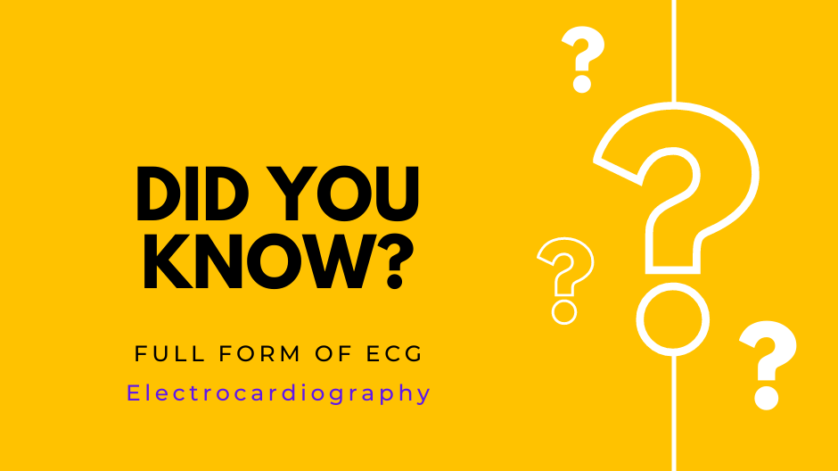ECG Full Form
Electrocardiography (ECG) is a medical diagnostic technique used to record and interpret the electrical activity of the heart. It is a non-invasive procedure that measures the electrical impulses generated by the heart during its contraction and relaxation phases.
The electrical activity of the heart is detected by placing electrodes on the patient’s skin, which are then connected to a machine called an electrocardiograph. The machine records the electrical activity of the heart in the form of a graph, which is called an electrocardiogram.
An electrocardiogram provides valuable information about the heart’s rhythm and electrical activity. It is an essential tool for the diagnosis and monitoring of various heart conditions, such as arrhythmias, heart attacks, and heart disease.
ECG Procedure
The ECG procedure is simple and painless, and it can be done in a doctor’s office, clinic, or hospital. During the procedure, the patient lies down on a table or bed, and the technician places electrodes on the patient’s chest, arms, and legs. The electrodes are connected to the electrocardiograph machine, which records the electrical activity of the heart.
The procedure usually takes only a few minutes to complete, and the patient can resume normal activities immediately after the test. The results of the ECG are typically available within a few minutes, and the doctor can interpret them to make a diagnosis.
Interpreting an ECG
The interpretation of an ECG requires a trained healthcare professional, such as a cardiologist or an electrophysiologist. The interpretation involves analyzing the waveforms and intervals on the ECG graph to determine the heart’s rhythm, rate, and electrical activity.
The ECG graph consists of a series of waves and intervals that represent the electrical activity of the heart during each heartbeat. The main components of the ECG graph include the P wave, QRS complex, and T wave.
The P wave represents the electrical activity of the atria, or the upper chambers of the heart. The QRS complex represents the electrical activity of the ventricles, or the lower chambers of the heart. The T wave represents the repolarization, or relaxation, of the ventricles.
Abnormalities in the ECG can indicate various heart conditions, such as arrhythmias, myocardial infarction (heart attack), or heart disease. The doctor can use the ECG results, along with other tests and medical history, to make a diagnosis and develop a treatment plan.
ECG is a simple, non-invasive procedure that provides valuable information about the heart’s electrical activity. It is an essential tool for the diagnosis and monitoring of various heart conditions, and it can help healthcare professionals make informed decisions about patient care. If you are experiencing any symptoms related to your heart, such as chest pain, shortness of breath, or irregular heartbeat, consult your doctor, who may recommend an ECG as part of your evaluation.

